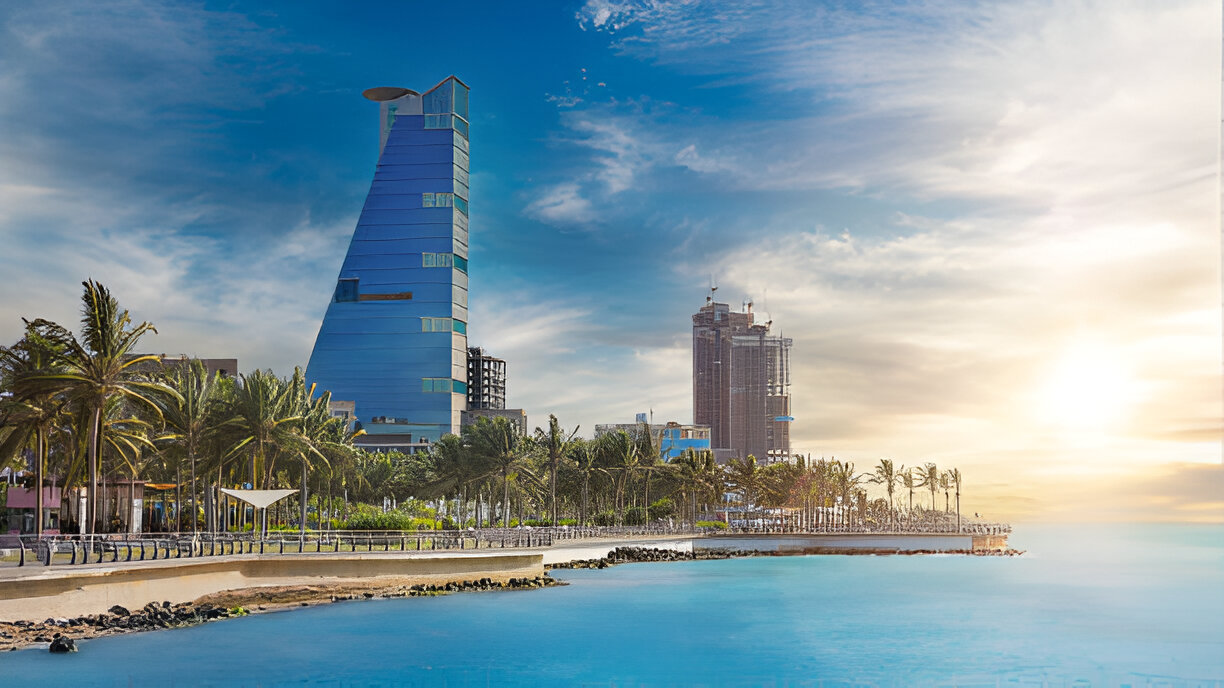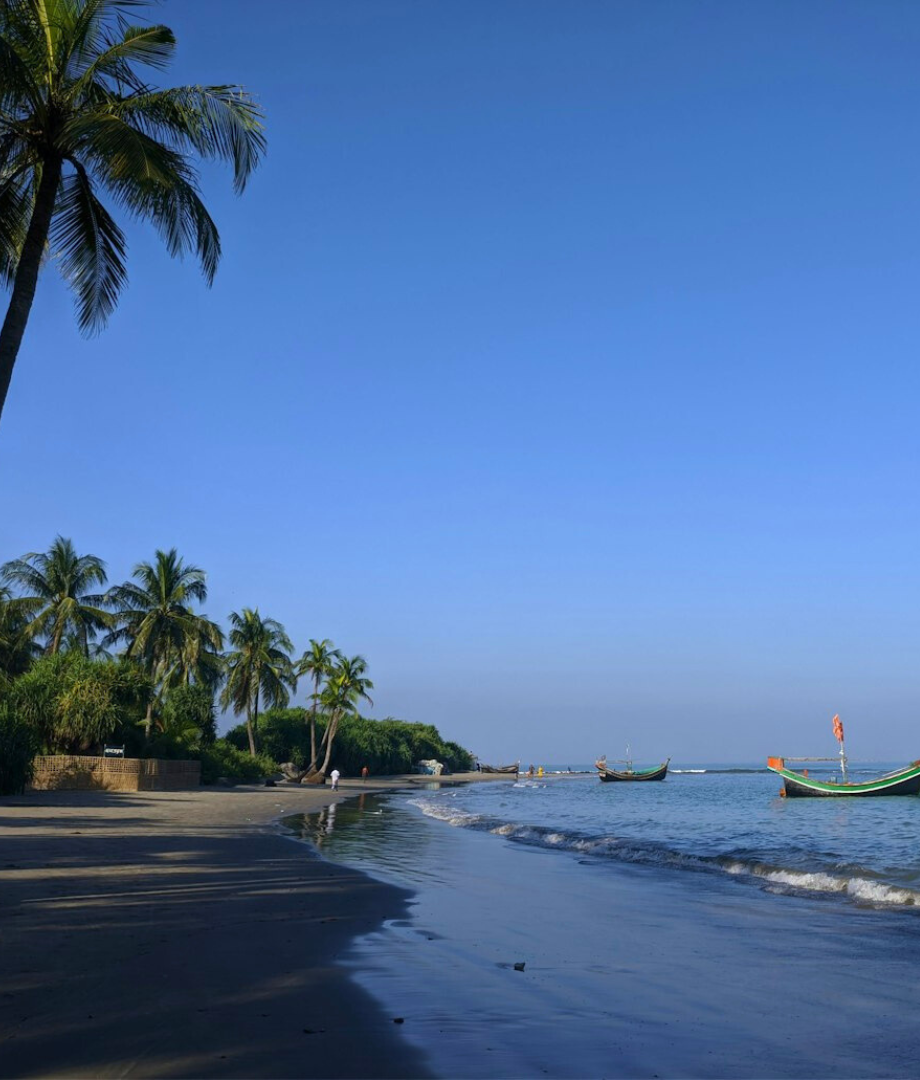Discover the Top Tourist Spots in Saudi Arabia
Saudi Arabia is quickly becoming one of the world’s most exciting travel destinations. As an official partner of the Saudi Tourism Authority, ShareTrip can help you visit the best places in Saudi Arabia. Each of these destinations offers a unique mix of culture, history, and adventure.
Best Cities in Saudi Arabia
Riyadh
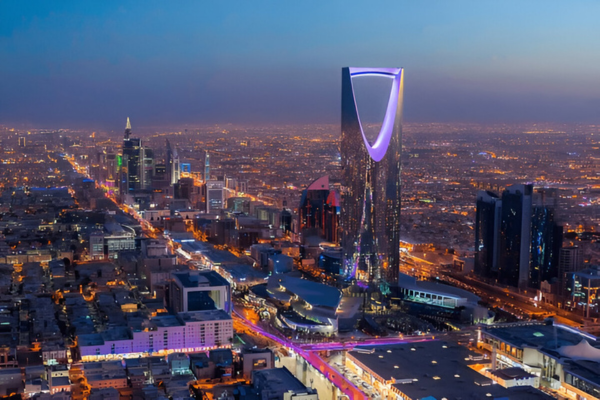
Riyadh offers a mix of historic treasures and futuristic attractions. As the capital and largest city of Saudi Arabia, Riyadh embodies the country’s political, cultural, and economic heartbeat. Most tourists exploring Saudi Arabia land at Riyadh, hence it’s a great place to start.
A key attraction in Riyadh is the At-Turaif District in Diriyah. This site holds the title of a UNESCO World Heritage Site and serves as the birthplace of the first Saudi state. The National Museum of Saudi Arabia presents a deep dive into Arabian history across eight well-curated halls.
Riyadh’s King Abdulaziz Historical Center and Murabba Palace are significant for understanding the kingdom's heritage. The city’s modern skyline is dominated by the Kingdom Centre Tower and Al Faisaliah Tower. Riyadh is a top spot for business tourism and international events. The Riyadh Season festival draws millions of visitors each year.
Riyadh is a key part of Vision 2030’s tourism plan. It aims to be one of the best places to visit in Saudi Arabia. The King Abdullah Park in Al Malaz features vast green spaces and the largest dancing fountain in Saudi Arabia.
For shopping enthusiasts, destinations like Riyadh Park Mall and Granada Center offer world-class retail experiences. Traditional markets such as Souq Al Zal highlight the city's enduring connection to its Bedouin roots.
Adventurers can go to the Edge of the World (Jebel Fihrayn). This site is 90 kilometers northwest of Riyadh. It is known for hiking and desert tours.
Jeddah
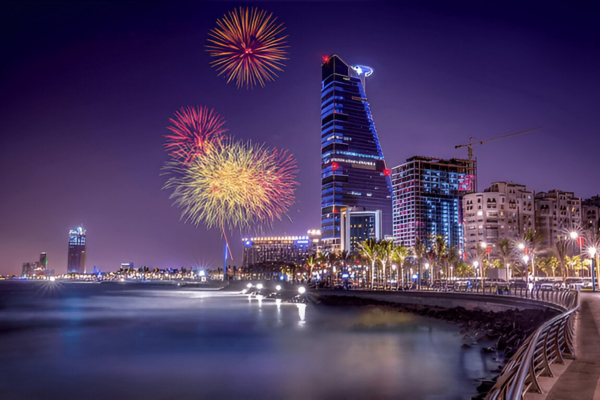
Jeddah ranks among the popular places to visit in Saudi Arabia. This city plays a vital role as a historical port and a modern tourist hub. Positioned along the Red Sea coast, Jeddah is famous for its UNESCO-listed Al-Balad district, featuring coral-stone houses over 500 years old. Its waterfront, the Jeddah Corniche, stretches 30 kilometers and offers attractions like the King Fahd Fountain, the world's tallest at 312 meters.
Sightseeing in Jeddah includes visiting the Tayebat Museum, which showcases Islamic art and Saudi heritage across 300 rooms. Then comes landmarks like the floating Al Rahma Mosque and the modern Jeddah Art Promenade. Tourists exploring Saudi Arabia's travel destinations find Jeddah rich with activities that span cultural, recreational, and shopping experiences. Red Sea Mall and Mall of Arabia serve as premier shopping attractions, while North Corniche and Obhur Creek cater to those seeking beach resorts and marine sports.
Historical spots include the ancient Jeddah Wall remnants and the traditional souqs like Souq Al Alawi. For nature enthusiasts, Fakieh Aquarium presents Red Sea marine life in Saudi Arabia's largest public aquarium. As a major stopover for global visitors, Jeddah exemplifies Saudi Arabia’s ambition to grow as a world-class tourism destination under Vision 2030.
AlUla
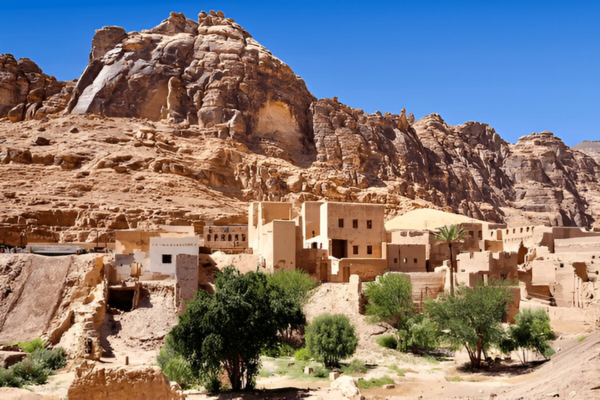
AlUla is one of Saudi Arabia’s most significant destinations. People know this area for its ancient heritage and modern desert landscapes. AlUla is in the Medina Region.
It is home to Hegra, Saudi Arabia’s first UNESCO World Heritage Site. Hegra has 111 well-preserved Nabataean tombs carved into sandstone cliffs. The Old Town of AlUla features narrow mudbrick alleys and historic mosques, offering a vivid glimpse into Arabian history.
Visitors can explore places like Elephant Rock, a natural sandstone formation. They can also marvel at AlUla’s stunning rock formations and canyons. The city also offers eco-friendly resorts like Habitas AlUla, blending luxury with sustainable tourism. AlUla's unique blend of archaeology, nature, and culture makes it a premier destination for tourism in Saudi Arabia.
AlUla merges historical wonders with natural attractions. Tourists often attend events like Winter at Tantora Festival, featuring concerts, hot air balloon rides, and cultural exhibitions.
Adventure seekers explore AlUla’s hiking trails, such as the Hidden Valley and Al Gharameel Rocks. Maraya Concert Hall, the world’s largest mirrored building, stands as a modern icon amidst the ancient desert setting.
Stargazing in AlUla’s dark skies attracts astronomy enthusiasts. AlUla is working hard to preserve its sites. The Royal Commission for AlUla supports these efforts. This makes AlUla a great place to visit in Saudi Arabia.
Dammam
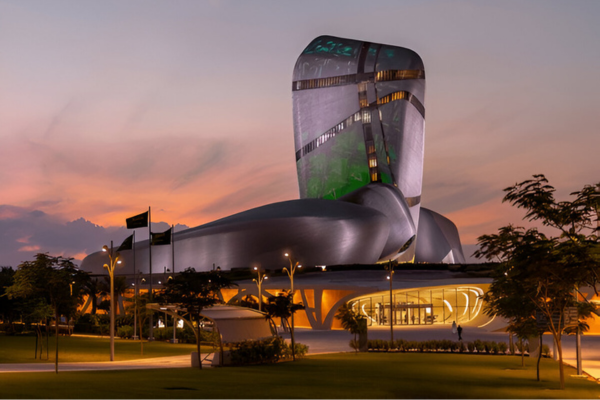
Dammam ranks as one of Saudi Arabia’s most wonderful cities. It is known for its modern attractions and seaside beauty.
Dammam is in the Eastern Province of Saudi Arabia. It is a popular place to visit. The city has a beautiful Corniche. This is a long area with parks, beaches, and public art by the Arabian Gulf.
Dammam’s strategic location connects it to Khobar and Dhahran, forming a metropolitan hub for shopping, dining, and entertainment. Its combination of urban sophistication and waterfront relaxation positions Dammam among the top Saudi Arabia tourist destinations.
Dammam’s attractions offer a diverse experience for visitors. King Fahd Park, the largest park in the Kingdom, features lakes, fountains, and amusement areas. Coral Island, also known as Marjan Island, attracts visitors with its beaches, fishing spots, and ferry rides. Heritage Village Museum presents traditional Saudi artifacts, food, and crafts, enriching the cultural sightseeing experience.
Dammam’s King Abdulaziz Sea Port, the largest on the Gulf, highlights the city’s economic and historical importance. Adventure seekers explore Al Khobar’s Half Moon Bay resorts, just minutes away, offering jet skiing and diving.
Taif
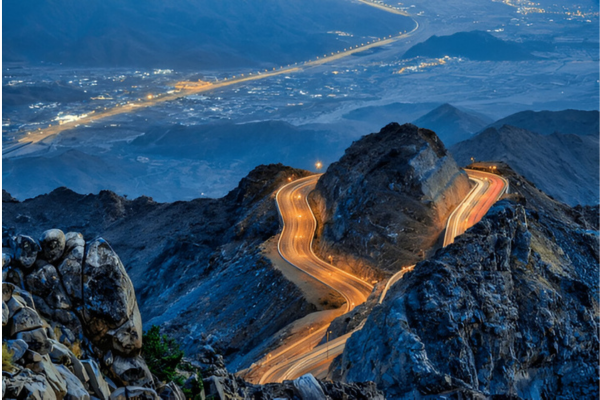
Taif is a popular city in Saudi Arabia. It is known for its cooler climate, mountainous landscapes, and fragrant rose fields.
Located on the slopes of the Sarawat Mountains, Taif attracts visitors seeking natural beauty and outdoor attractions. The city is famous for its Taif Rose Festival, celebrating the harvest of millions of Damask roses used in perfumes worldwide.
Key attractions include Al Rudaf Park, Shubra Palace Museum, and Al Hada Mountain, accessible by one of the region’s longest cable cars. With its unique climate, cultural festivals, and scenic landscapes, Taif ranks among the most diverse places to visit in Saudi Arabia.
Taif offers a blend of cultural heritage and natural attractions. Adventure seekers enjoy hiking trails, mountain resorts, and paragliding activities in Al Shafa and Al Hada. Taif’s ancient market Souq Okaz is revived with festivals and theatrical performances, which is famous among history buffs.
Wildlife lovers can explore Saiysad National Park, home to native flora and fauna. Taif’s agricultural richness, seen in its fruit markets offering pomegranates, figs, and honey, adds to its charm.
Abha
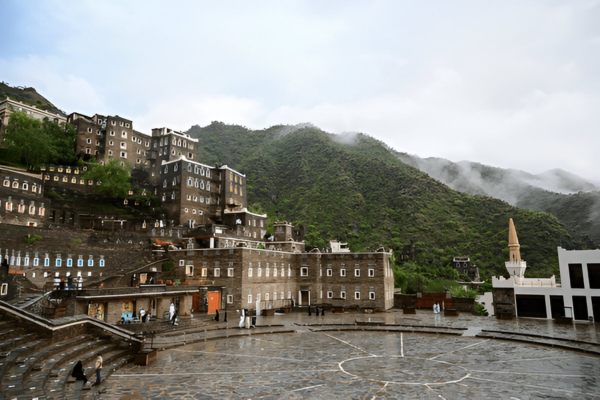
Abha, the capital of the Asir Province, is among the leading places to visit in Saudi Arabia. It is known for its cool climate and mountainous landscapes. Situated at an altitude of 2,200 meters, Abha offers visitors lush parks, misty peaks, and colourful markets.
Key attractions include Asir National Park, Abha Dam Lake, and the historic Al-Muftaha Village, a hub for local arts and culture. The city’s cable car system connects visitors to sites like Green Mountain and Al-Soudah, the highest peak in Saudi Arabia.
Abha’s refreshing weather during the summer months positions it as a top travel place for those seeking natural activities in Saudi Arabia.
Abha delivers a rich combination of natural beauty and cultural attractions. Visitors enjoy hiking and camping in Al-Soudah Park, known for its dense juniper forests and cool breezes.
History enthusiasts explore the centuries-old Shada Palace and traditional stone-built villages like Rijal Almaa. Souq Al Thulatha, one of the oldest markets in the region, offers handmade crafts and traditional foods. The annual Abha Festival features music, art, and performances celebrating Asiri heritage.
Makkah
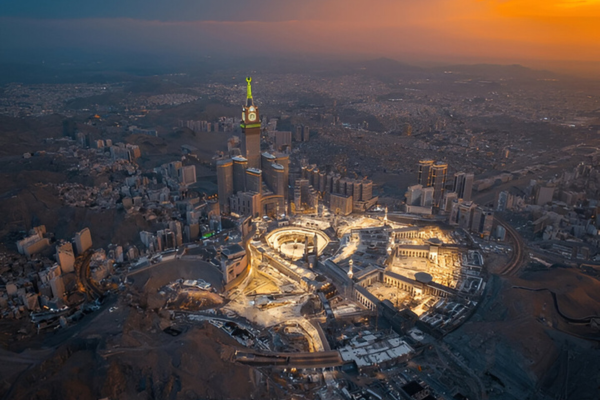
Makkah is the most sacred city in Islam. It is also one of the most visited destinations in Saudi Arabia. It is reserved for Muslim travellers.
Located in western Saudi Arabia, Makkah is home to the Masjid al-Haram, the largest mosque in the world, and the Holy Kaaba, Islam’s most revered site. Millions of Muslims travel annually to perform Hajj and Umrah pilgrimages, following traditions established over 1,400 years ago.
Significant religious sights include Mount Arafat, Mina, and Jabal al-Nour, where Prophet Muhammad received his first revelations. Although not a conventional tourist spot, Makkah's religious and historical significance makes it a central pillar of Saudi Arabia’s travel landscape.
Makkah offers a spiritual journey unmatched by any other Saudi Arabia places. Pilgrims engage in rituals that date back to the time of Prophet Abraham, creating a deeply meaningful travel experience.
The Abraj Al Bait Towers, adjacent to Masjid al-Haram, provide modern amenities, shopping centers, and accommodations for visitors. Museums like the Exhibition of the Two Holy Mosques showcase Islamic history and architecture. Makkah blends sacred tradition with modern facilities, which is really fascinating.
Medina
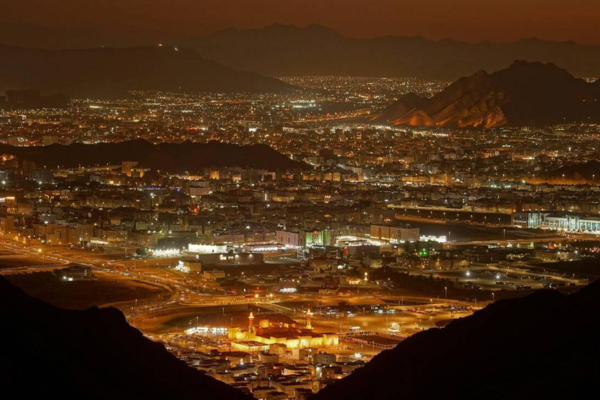
Medina, officially known as Al-Madinah Al-Munawwarah, is one of the most revered cities in Saudi Arabia. It is the second holiest site in Islam. Located in the western region, Medina is home to Al-Masjid an-Nabawi, which houses the tomb of Prophet Muhammad.
Some attractions in Medina are open to non-muslims, such as Dar Al Madinah Museum, the Hejaz Railway Museum, Al Noor Mall, and various desert excursions.
Key sights of Medina include Quba Mosque, the first mosque in Islam, and Mount Uhud, the site of a major Islamic battle. Although not a traditional tourist attraction, Medina’s unparalleled religious importance places it at the heart of Saudi Arabia travel experiences for Muslims worldwide.
Pilgrims engage in prayers at Al-Rawda Al-Sharifa, considered one of the gardens of Paradise, and visit historic mosques like Masjid al-Qiblatain.
The Dar Al Madinah Museum presents Islamic heritage through rare artifacts and detailed exhibitions. Medina’s modern facilities, hotels, and transport systems support the massive influx of visitors with comfort and efficiency. While sightseeing is rooted in religious reverence, Medina remains one of the most important Saudi Arabia destinations.
Best Historical and Cultural Sites in Saudi Arabia
Al-Balad
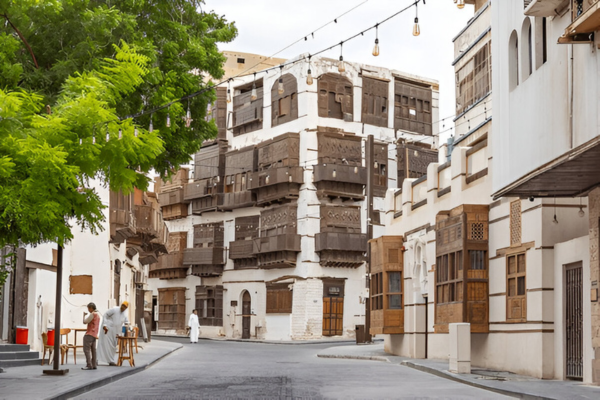
Al-Balad, the historic heart of Jeddah, stands as one of Saudi Arabia’s most important tourist attractions.
Established in the 7th century, Al-Balad showcases centuries-old coral stone houses, intricate wooden balconies, and narrow winding streets. It is a UNESCO World Heritage Site.
Key sights include Naseef House, Al-Matbouli House Museum, and ancient souks offering spices, textiles, and jewelry. Al-Balad’s preservation efforts highlight the city's role as a historic trading hub and gateway for pilgrims to Mecca. Its authentic architecture and vibrant street life make Al-Balad a top sightseeing destination in Saudi Arabia.
Al-Balad offers tourists a deep cultural experience. Walking tours lead visitors through historic alleys, heritage sites, and open-air markets that capture the essence of old Arabia. Nighttime visits showcase Al-Balad’s illuminated architecture and lively atmosphere, ideal for photography and cultural exploration.
Art lovers find restored galleries and cultural centers that blend history with modern creativity. Traditional restaurants serve classic Hejazi dishes, enhancing the authentic travel experience. As a preserved historic quarter, Al-Balad embodies the living history of Saudi Arabia and remains a must-visit attraction for all kinds of travellers.
Hegra
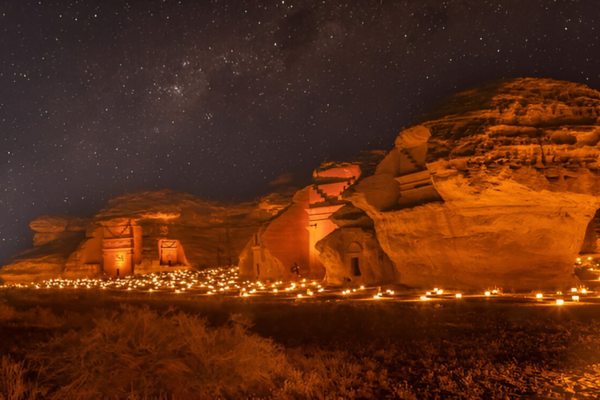
Hegra stands as Saudi Arabia’s first UNESCO World Heritage Site. Also known as Al-Hijr or Mada'in Salih, Hegra is a cornerstone of Saudi Arabia’s historic attractions.
It is located near AlUla in the northwest. Hegra features over 100 monumental tombs carved by the Nabataeans around the 1st century CE. These ancient tombs, with intricate facades, offer a rare glimpse into pre-Islamic Arabian history.
Hegra’s well-preserved archaeological sites include Qasr al-Farid, the largest and most iconic tomb. The area offers structured sightseeing tours, desert experiences, and archaeological walks, appealing to cultural travellers.
Guided tours in Hegra reveal ancient water wells, stone inscriptions, and residential areas that showcase the Nabataean civilisation’s ingenuity. The site is part of AlUla’s broader cultural revival, including festivals and open-air exhibitions. Adventure seekers can experience off-road desert safaris, hot air balloon rides, and stargazing events around Hegra.
Its conservation, led by the Royal Commission for AlUla, ensures an authentic yet sustainable tourism experience. As one of the top tourist places in Saudi Arabia, Hegra offers tourists a chance to connect deeply with the Kingdom’s rich and ancient past.
Diriyah
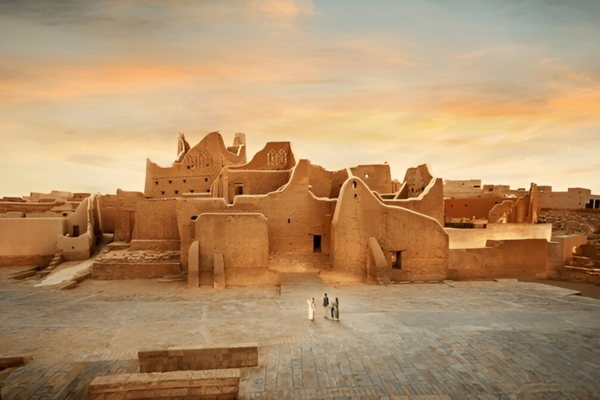
Diriyah is located northwest of Riyadh. It is one of Saudi Arabia’s most important historical and cultural attractions. Known as the birthplace of the First Saudi State in 1744, Diriyah is centered around the UNESCO World Heritage Site of At-Turaif District. The mud-brick structures of At-Turaif showcase the distinctive Najdi architectural style.
Restoration projects have transformed Diriyah into a major sightseeing destination. It features museums, heritage parks, and cultural centers. Bujairi Terrace, an area filled with restaurants and art spaces, offers a modern experience against a historic backdrop.
Diriyah offers tourists an immersive experience into Saudi Arabia’s origins and traditional lifestyles. Travellers explore restored palaces, historic mosques, and interactive exhibits detailing the rise of the Saudi dynasty.
The Diriyah Gate Development Project is set to transform the area into one of the world’s leading cultural destinations, blending heritage with modern luxury amenities. Regular events, traditional markets, and storytelling sessions highlight Diriyah’s living history.
Its strategic role in Saudi Arabia’s Vision 2030 tourism initiatives further cements its appeal. For tourists seeking authentic cultural destinations in Saudi Arabia, Diriyah stands out as a must-visit spot rich in heritage and national pride.
The National Museum
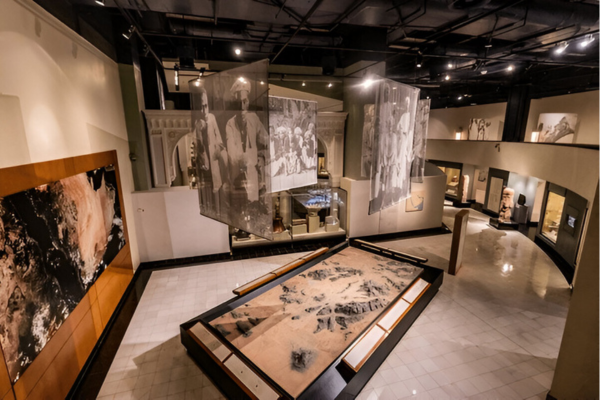
The National Museum in Riyadh stands as a pivotal cultural institution for understanding Saudi Arabia's rich history. Situated near the historic King Abdulaziz Palace in the Al Murabba district, it offers an immersive journey through the Arabian Peninsula's past. Spanning 17,000 square meters, the museum houses over 3,700 artifacts.
The museum’s comprehensive exhibits narrate the story of human settlement, the emergence of ancient Arab kingdoms, the pre-Islamic era, the dawn of Islam, the establishment of the Saudi states, and the profound importance of the Hajj and the Two Holy Mosques within the Kingdom.
It shows the nation’s central role in Islamic history. The museum's thoughtfully curated exhibits feature interactive displays, meticulously preserved artifacts, and informative presentations.
Notable highlights include a substantial fragment of a meteorite, fascinating skeletons of prehistoric animals, intricate displays detailing the cultures of ancient Arabian kingdoms such as Dilmun and Nabataea, and information regarding the life of Prophet Muhammad.
Furthermore, the museum meticulously chronicles the unification of Saudi Arabia under King Abdulaziz Al Saud and the subsequent urban development of the holy cities of Mecca and Medina.
Rock Art in the Ha'il Region

The Rock Art in the Ha'il Region is one of Saudi Arabia’s most important UNESCO World Heritage Sites. It attracts tourists interested in ancient history and culture. Located across Jubbah and Shuwaymis, this site features thousands of petroglyphs and inscriptions carved into sandstone outcrops.
The carvings, dating back over 10,000 years, depict scenes of hunting, animals, and daily life, offering valuable insights into prehistoric human civilisation.
The Ha'il rock art is one of the oldest and most detailed collections in the Arabian Peninsula. As a major sightseeing destination, it stands out among Saudi Arabia attractions for its archaeological and historical significance.
The Rock Art in Ha'il provides a unique experience for tourists seeking entertainment beyond modern cities. Guided tours allow travellers to explore sites like Jebel Umm Sinman and Jebel al-Manjor, where ancient civilizations left their artistic legacy. Information panels, observation decks, and visitor centers enhance the educational aspect of the tour.
The site's inclusion in global heritage lists highlights its universal cultural value. The Rock Art of the Ha'il Region offers a rare and fascinating glimpse into Saudi Arabia’s ancient past.
Al Masmak Fortress

Al Masmak Fortress is one of the most visited cultural attractions in Saudi Arabia. This major historical landmark is located in Riyadh. It was built in 1865 from mudbrick and clay. The fortress played a pivotal role in the unification of Saudi Arabia when King Abdulaziz captured it in 1902.
It now houses a museum showcasing photographs, artifacts, and detailed exhibits about Saudi Arabia’s founding history.
Tourists explore original architecture including the massive wooden gate, watchtowers, and inner courtyard. Al Masmak Fortress offers an immersive journey into Saudi Arabia’s early political and military history
The site’s importance is highlighted by educational displays, traditional weapons, and historical reenactments. The fortress is surrounded by Souq Al-Zal, one of Riyadh’s oldest traditional markets, enhancing the cultural sightseeing experience. Nighttime illuminations and guided tours make Al Masmak a dynamic tourist attraction.
As a preserved symbol of Saudi resilience and unity, Al Masmak Fortress stands out for visitors interested in history, architecture, and cultural identity. Its accessibility within Riyadh makes it a must-visit destination for history-focused touring.
Best Beaches and Coastal Attractions in Saudi Arabia
The Red Sea Project
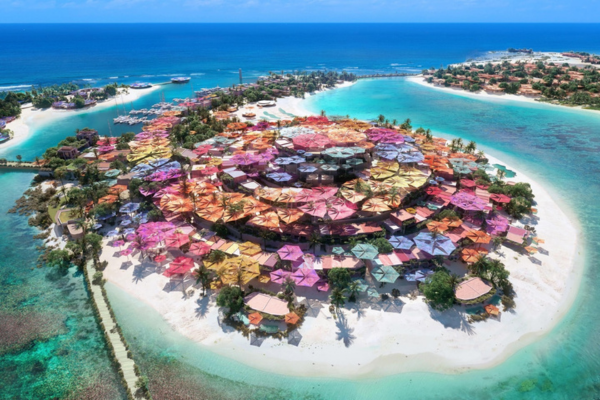
The Red Sea Project is one of Saudi Arabia’s most ambitious tourism developments. This destination is 28,000 square kilometers big. It is sometimes referred to as the "Maldives of Saudi Arabia" or "Maldives of the Middle East".
Located in the west of the country, The Red Sea Project includes over 90 untouched islands, such as Shura Island, Ummahat Islands, Al Wajh Lagoon, Barracuda Beach, etc. Moreover, its nearby popular public beaches include Umluj Beach, Yanbu Al Nakhl Beach, that are renowned for non-luxury access.
The Red Sea International Airport enhances accessibility for international tourists. As a future hotspot for high-end tourism, the Red Sea Project promises world-class entertainment focused on nature, relaxation, and environmental conservation.
The Project has some of the world’s most beautiful beaches and marine ecosystems. Activities include diving among vibrant coral reefs, kayaking through mangroves, and exploring ancient coastal sights. Resorts like Six Senses Southern Dunes and The St. Regis Red Sea Resort provide luxurious accommodations with a focus on sustainability. The development aligns with Saudi Vision 2030 goals to diversify tourism offerings.
Half Moon Bay
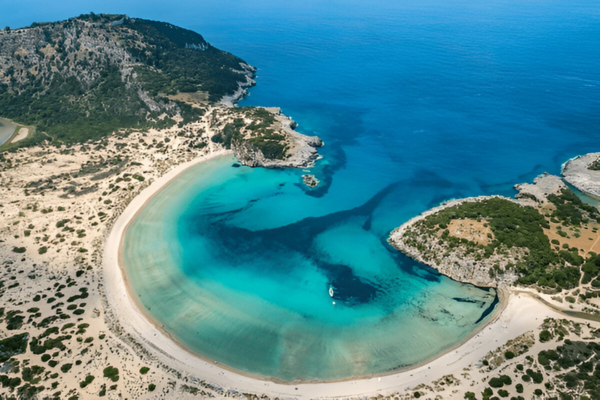
Half Moon Bay is one of Saudi Arabia’s most visited coastal attractions. It is located near Al Khobar in the Eastern Province. Named for its crescent-shaped shoreline, the bay stretches for about 22 kilometers and offers calm, shallow waters ideal for swimming and family outings.
Half Moon Bay has been a favorite Saudi Arabia tourist spot for decades. Visitors enjoy well-maintained public beaches, private resorts, and recreational facilities such as jet skiing, sailing, and beachside picnic areas.
Half Moon Bay is easily accessible. Its natural beauty and family-friendly atmosphere make it a standout destination for tourism along the Arabian Gulf.
The bay's safe swimming conditions attract both local and international visitors year-round. Adventure seekers enjoy dune bashing on nearby desert hills, while others explore coastal resorts offering luxury amenities and marine sports. Popular resorts like Dana Beach Resort offer private beaches, water parks, and entertainment complexes.
For those seeking beachside sightseeing destinations with a mix of adventure and leisure, Half Moon Bay delivers one of the best coastal experiences in Saudi Arabia.
Farasan Islands
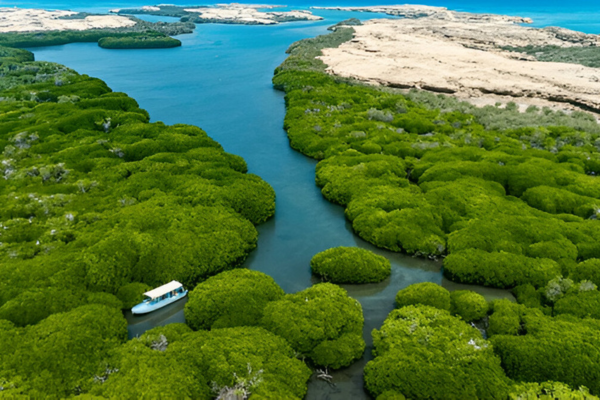
The Farasan Islands are one of Saudi Arabia’s most stunning beach destinations. It is located in the Red Sea near Jizan.
This archipelago consists of over 80 islands known for their white sand beaches, rich coral reefs, and diverse marine life. Farasan Island, the largest, features sightseeing attractions like the Ottoman Fort, Beit Al Refai house, and ancient coral-built villages.
Protected as the Farasan Islands Marine Sanctuary, the area is ideal for snorkelling, diving, and bird watching. As a remote and pristine Saudi Arabia travel place, the Farasan Islands offer a unique blend of natural beauty, heritage, and outdoor adventure.
The Farasan Islands attract tourists seeking unspoiled Saudi Arabia attractions with authentic ecological and cultural experiences.
The islands host rare species such as the Arabian gazelle and are a key stopover for migratory birds. Its vibrant coral, teemed with tropical fish and sea turtle reefs, are perfect for diving enthusiasts. Al Qassar Heritage Village showcases the islands' historic architecture and cultural traditions. Accessible by ferry from Jizan, the islands offer both day trips and eco-friendly stays.
Obhur Creek
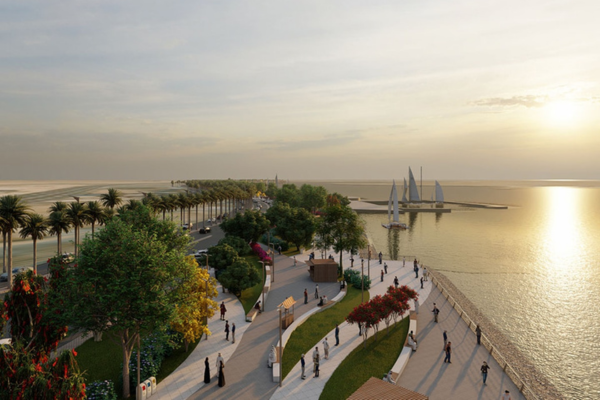
Obhur Creek, located north of Jeddah, is a leading coastal attraction known for its calm turquoise waters and luxury resorts. This natural inlet of the Red Sea is a prime destination for marine tourism, offering sailing, diving, jet skiing, and yachting.
Obhur is lined with private beach clubs, high-end hotels, and waterfront villas, attracting both residents and international tourists.
It’s also a key recreational site for Jeddah’s residents, especially on weekends and holidays. As one of the top Saudi Arabia tourist spots, Obhur Creek provides a mix of leisure, scenic views, and water-based attractions.
Obhur Creek stands for its blend of urban convenience and coastal beauty. The area is home to several diving centers where visitors explore vibrant coral reefs and Red Sea marine life. Sunset cruises and floating restaurants offer unique sightseeing experiences along the creek.
Obhur is also part of Saudi Arabia’s tourism development vision, with upcoming luxury marina projects and eco-tourism resorts. For tourists searching for premium coastal destinations with both adventure and relaxation, Obhur Creek is one of the most attractive sightseeing spots along the Saudi Red Sea coast.
Al Fanateer Beach
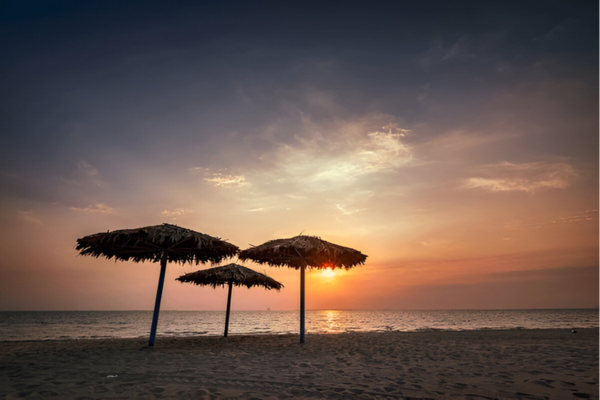
Al Fanateer Beach is one of the most well-maintained public beaches in Saudi Arabia. It is located in Jubail on the Eastern Province coast. Known for its wide promenade, landscaped gardens, and clear blue waters, Al Fanateer Beach attracts families, joggers, and beachgoers year-round.
The beach is lined with cafés, picnic spots, and playgrounds, making it a favorite destination for both locals and tourists.
Water activities such as boating and jet skiing are available along the shore. With its clean environment and relaxing atmosphere, Al Fanateer Beach ranks among the most accessible and family-friendly Saudi Arabia tourist spots.
Al Fanateer Beach offers a modern yet natural setting ideal for sightseeing and leisure. Tourists enjoy sunset views, outdoor fitness areas, and well-lit walking paths that enhance the coastal experience. The beach is close to shopping centers and restaurants, making it a convenient stop for tourists exploring Jubail.
Its calm waters are safe for swimming, attracting families and casual swimmers. Regular events and seasonal lighting displays add to its appeal. The best part of this beach is that it combines comfort, beauty, and amenities altogether.
Silver Sands Beach
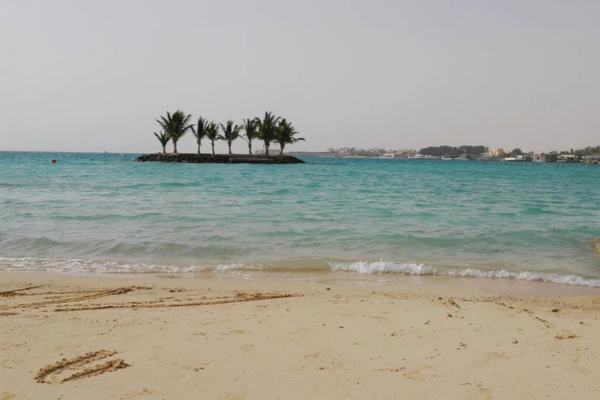
Silver Sands Beach is one of Saudi Arabia’s most exclusive and tranquil tourist spots. It is located on the northern coast of Jeddah. Popular for its white sands, clear turquoise waters, and relaxed environment, this private beach attracts both expats and local visitors seeking a more open and secluded coastal experience.
It offers swimming, sunbathing, snorkelling, and paddleboarding in a well-maintained setting.
Entry in this place is restricted to ticketed access, ensuring privacy and a limited crowd. As a premium Saudi Arabia travel place, Silver Sands Beach provides a laid-back alternative to public coastal attractions in the Kingdom.
The beach allows swimwear more freely than most public areas in Saudi Arabia, making it popular with international visitors. It features basic facilities, sun loungers, shaded areas, and a small café for refreshments. The calm waters are perfect for water sports and snorkelling, with clear visibility around the reef. It combines accessibility with exclusivity.
For tourists seeking peaceful and picturesque coastal attractions in Saudi Arabia, Silver Sands Beach stands out as a top-tier choice.
Best Nature and Adventure Spots in Saudi Arabia
Edge of the World
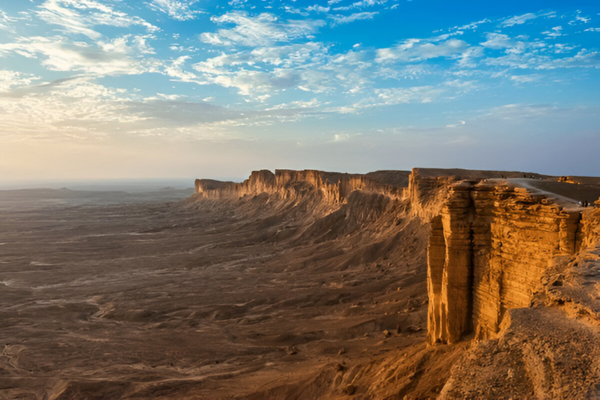
The Edge of the World is one of Saudi Arabia’s most iconic natural landmarks. It is Known for steep cliffs and panoramic desert views. Located near Riyadh in the Tuwaiq Escarpment, Edge of the World attracts adventurers, hikers, and nature photographers year-round.
The cliffs rise abruptly from the desert floor, giving the illusion of a landscape that drops off into infinity.
The site is accessible by 4x4 vehicles and is a top day-trip destination from the capital. As a major Saudi Arabia travel spot for outdoor enthusiasts, the Edge of the World offers raw, expansive beauty unlike any other spot in the country.
Edge of the World delivers one of the most dramatic sightseeing experiences in Saudi Arabia. Visitors hike along rugged trails, explore fossil-rich rocks, and take in views that stretch for kilometers across the desert. The area forms part of the larger Jebel Fihrayn region, known for its geological formations and prehistoric marine fossils. There are no formal facilities, making it essential to come prepared.
Wadi Al Disah
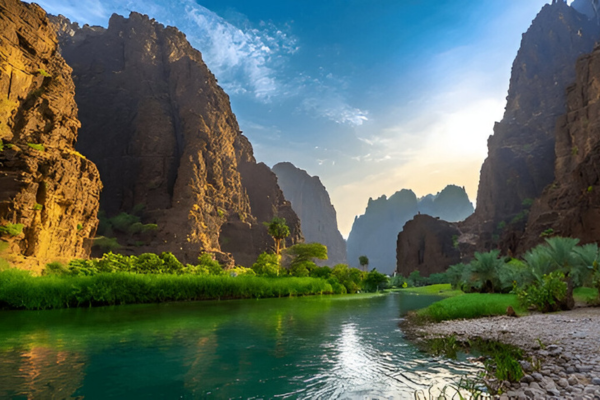
Wadi Al Disah is located in the Tabuk region of northwestern Saudi Arabia. It is one of the country’s most scenic natural attractions.
This valley, set between towering sandstone cliffs and lush palm groves, features year-round springs, dramatic rock formations, and fertile farmland. Known as the “Valley of Palms,” it offers a striking contrast to the surrounding desert.
The area is ideal for eco-tourism, hiking, and photography, attracting nature lovers and adventure seekers. Wadi Al Disah’s untouched landscape and biodiversity position it as a sustainable and off-grid exploration spot.
Wadi Al Disah stands out among Saudi Arabia tourist spots for its combination of natural beauty and peaceful isolation. The valley stretches over 15 kilometers and includes archaeological sites, freshwater streams, and shaded trails. Tourists often explore the area via off-road vehicles or guided hiking tours.
Seasonal wildflowers, endemic plants, and migratory birds enhance its sightseeing appeal. With the support of the Saudi Tourism Development Fund, Wadi Al Disah is set to become a major eco-tourism hub.
Asir National Park
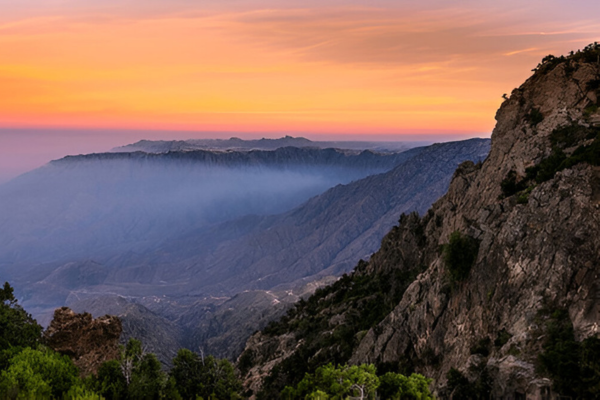
Asir National Park is the Kingdom’s first national park. Located in the southwest, it spans over 1,600 square kilometers. The park covers parts of the Asir Mountains and includes Jabal Sawda, one of the highest peaks in the country.
Tourists enjoy cool temperatures, terraced hillsides, and dense juniper forests—rare sights in Saudi Arabia’s mostly arid landscape.
Popular activities include hiking, camping, birdwatching, and exploring mountain villages. As a top Saudi Arabia travel place, Asir National Park offers both adventure and nature in a high-altitude setting.
Asir National Park is a biodiversity hotspot. It is home to over 300 plant species and rare wildlife such as the Arabian leopard and baboons. The park has several designated picnic areas, observation towers, and marked trails, making it ideal for family-friendly sightseeing.
Al-Soudah Park, within the reserve, offers cable cars, scenic lookouts, and access to local festivals. Seasonal fog and mild summers enhance the park’s appeal for tourists escaping the heat of other regions.
Yanbu
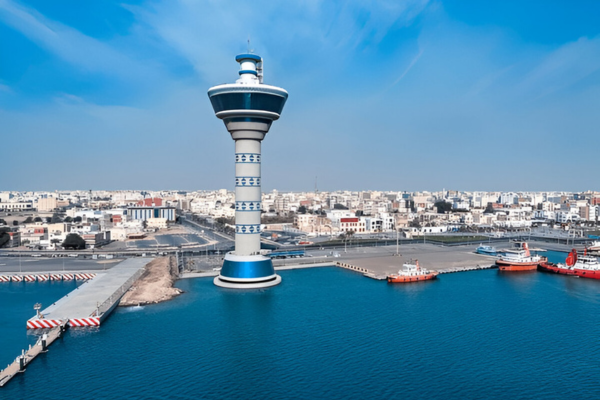
Yanbu is the scuba diving capital of Saudi Arabia. It is located on the Red Sea coast in the Medina Province. Yanbu is gaining popularity among international tourists for marine tourism and coastal adventure.
Known for its clear waters and vibrant coral reefs, Yanbu attracts divers, snorkellers, and beachgoers year-round.
The city features a mix of modern infrastructure and historical charm, including the renovated Old Town and traditional souqs. Yanbu’s coastline includes public beaches, private resorts, and marinas ideal for sailing and water sports. Its recreational offerings make it a standout among nature lovers and seaside explorers.
Yanbu offers some of the best underwater sightseeing experiences in Saudi Arabia. Dive sites like Seven Sisters Reef and Iona Wreck are noteworthy mentions. Inland, the Yanbu Lake Park and surrounding desert landscapes provide additional outdoor recreation.
The city hosts the Yanbu Flower Festival, one of the largest botanical events in the Kingdom, drawing thousands of tourists. With a blend of natural attractions and cultural heritage, Yanbu is a versatile travel destination.
KAEC
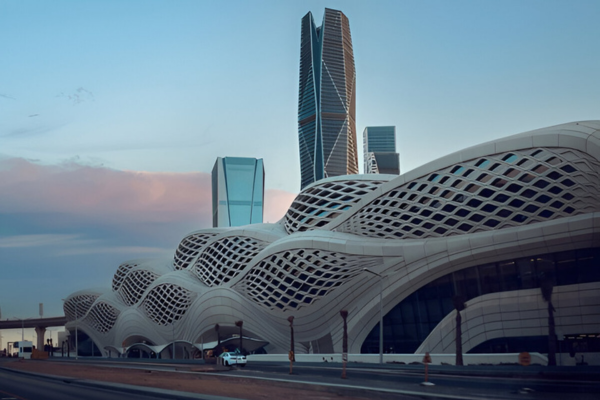
King Abdullah Economic City (KAEC) is located along the Red Sea north of Jeddah. KAEC is a rising tourism and recreation destination in Saudi Arabia. Designed as a smart, sustainable city, KAEC blends urban living with coastal nature, offering resorts, golf courses, and waterfront promenades.
The Yam Beach is a major attraction, featuring clear waters, jet ski rentals, and beach clubs. The city’s marina is ideal for sailing and yacht tours, enhancing its appeal as a Red Sea travel destination.
With easy access via high-speed rail from Jeddah and Medina, KAEC ranks among the most accessible Saudi Arabia attractions for both local and international tourists.
Tourists can enjoy cycling paths, go-karting, and nature walks in landscaped public areas. The Royal Greens Golf & Country Club hosts international tournaments and appeals to sport-oriented travelers. Events like the KAEC Beach Run and music festivals draw families and adventure seekers alike.
Its modern infrastructure and range of recreational options make it a standout for those looking for sightseeing destinations that combine comfort, nature, and entertainment in Saudi Arabia’s evolving tourism landscape.
Al Jubail
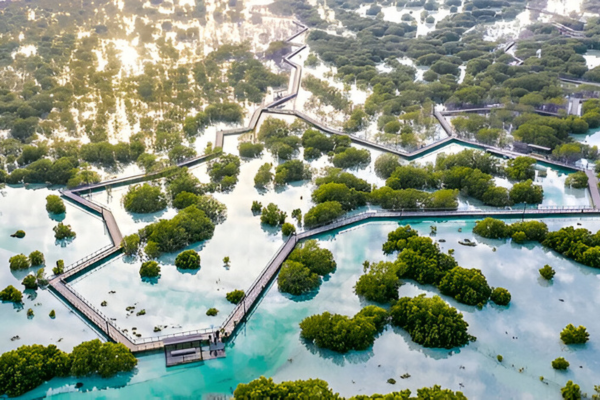
Al Jubail is one of Saudi Arabia’s most important industrial cities and a growing coastal destination. Located in the Eastern Province along the Arabian Gulf, this place is known for its well-planned urban layout and natural attraction.
The ctty features attractive waterfronts such as Al Nakheel Beach and Fanateer Beach, both popular for swimming, picnicking, and marine activities. Jubail’s corniche areas are landscaped for walking and cycling, adding to its appeal as a sightseeing and relaxation spot.
With modern infrastructure and natural charm, Al Jubail stands out as a balanced Saudi Arabia travel place.
Al Jubail offers more than just industry—it's also home to rich natural ecosystems. The Jubail Mangrove Park allows visitors to explore coastal biodiversity through guided trails and birdwatching platforms. The city also hosts cultural events and local markets. Boat tours, fishing, and jet skiing attract outdoor enthusiasts looking for Gulf-side adventure.
With its mix of beach attractions, urban amenities, and nature reserves, Al Jubail appeals to tourists seeking diverse Saudi Arabia destinations. Its clean environment, recreational offerings, and growing tourism infrastructure make it a valuable addition to the Kingdom’s travel landscape.
Frequently Asked Questios About Visiting Saudi Arabia
What is the most famous place in Saudi Arabia?
The most famous place in Saudi Arabia is AlUla, known for its ancient tombs and rock formations like those in Hegra (Madain Salih).
Why is Saudi Arabia famous for tourism?
Saudi Arabia has recently become famous for tourism due to modern developments under Vision 2030. Moreover, its mix of religious significance and ancient heritage sites also play a role here.
Is Saudi a good tourist destination?
Yes, Saudi Arabia is an increasingly popular tourist destination with historical landmarks, natural wonders, and luxury experiences.
What is Saudi Arabia popular for?
Saudi Arabia is popular for its Islamic heritage, oil wealth, desert landscapes, and emerging tourism sector.
How to enjoy in Saudi Arabia?
To enjoy Saudi Arabia, explore its cultural cities, visit heritage sites like Diriyah and AlUla, try local cuisine, and experience desert adventures.
What are the best places to visit in Saudi Arabia?
The best places to visit in Saudi Arabia include Riyadh, Jeddah, AlUla, Abha, and Makkah, each offering unique cultural and natural attractions.
Why is Riyadh famous?
Riyadh is famous for its blend of modern skyscrapers, historical sites like Al-Masmak Fort, and being the capital of Saudi Arabia.
Is Riyadh worth visiting?
Yes, Riyadh is worth visiting for its museums, upscale shopping, and traditional architecture.
Is Jeddah worth visiting?
Yes, Jeddah is worth visiting for its Red Sea coast, historic district of Al-Balad, and vibrant art and food scene.
Which city is most beautiful in Saudi Arabia?
Abha is often considered the most beautiful city in Saudi Arabia for its mountains, cool climate, and greenery.
What to buy in Jeddah?
In Jeddah, popular items to buy include perfumes, traditional clothing, dates, gold, and local artwork.
What are the best things to buy in Saudi Arabia?
The best things to buy in Saudi Arabia include gold jewelry, oud perfume, dates, prayer rugs, and traditional souvenirs.
What are some good things to buy in Saudi Arabia?
Good purchases in Saudi Arabia include spices, abayas, Arabian coffee, incense burners, and local crafts.
What to buy in Makkah?
Popular items to buy in Makkah include Islamic books, prayer beads, zamzam water, and religious souvenirs.
Is gold cheap in Saudi Arabia?
Yes, gold is generally cheaper in Saudi Arabia due to lower taxes and high market availability.
How much is 1 gram of gold in Saudi Arabia?
As of recent rates, 1 gram of gold in Saudi Arabia costs approximately 230 to 250 SAR, but it varies with the market.
In which country is gold the cheapest?
Gold is often cheapest in countries like the Saudi Arabia, United Arab Emirates, and India due to lower taxes and local demand.
What is the most famous food in Saudi Arabia?
Kabsa, a spiced rice dish with meat, is the most famous food in Saudi Arabia and a staple in local cuisine.
Visit the Best Destinations in Saudi Arabia with ShareTrip!
Apart from flight, visa, and hotels and resorts for Saudi Arabia, you can also get customised tour packages that best suit your interests. Download our app on Android or iOS, call us at +8809617617617, or email us to vacation@sharetrip.net for more information on visiting Saudi Arabia.
